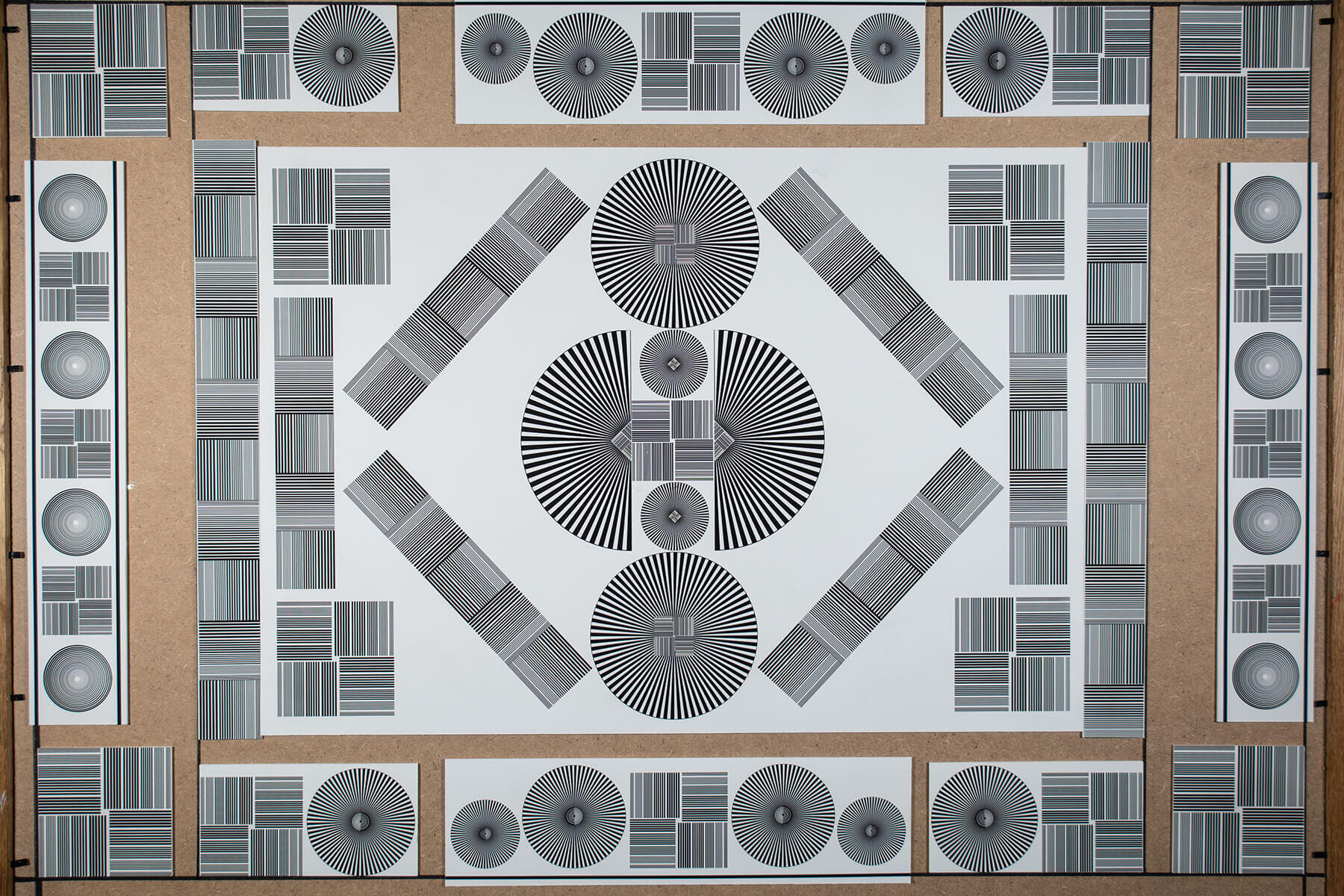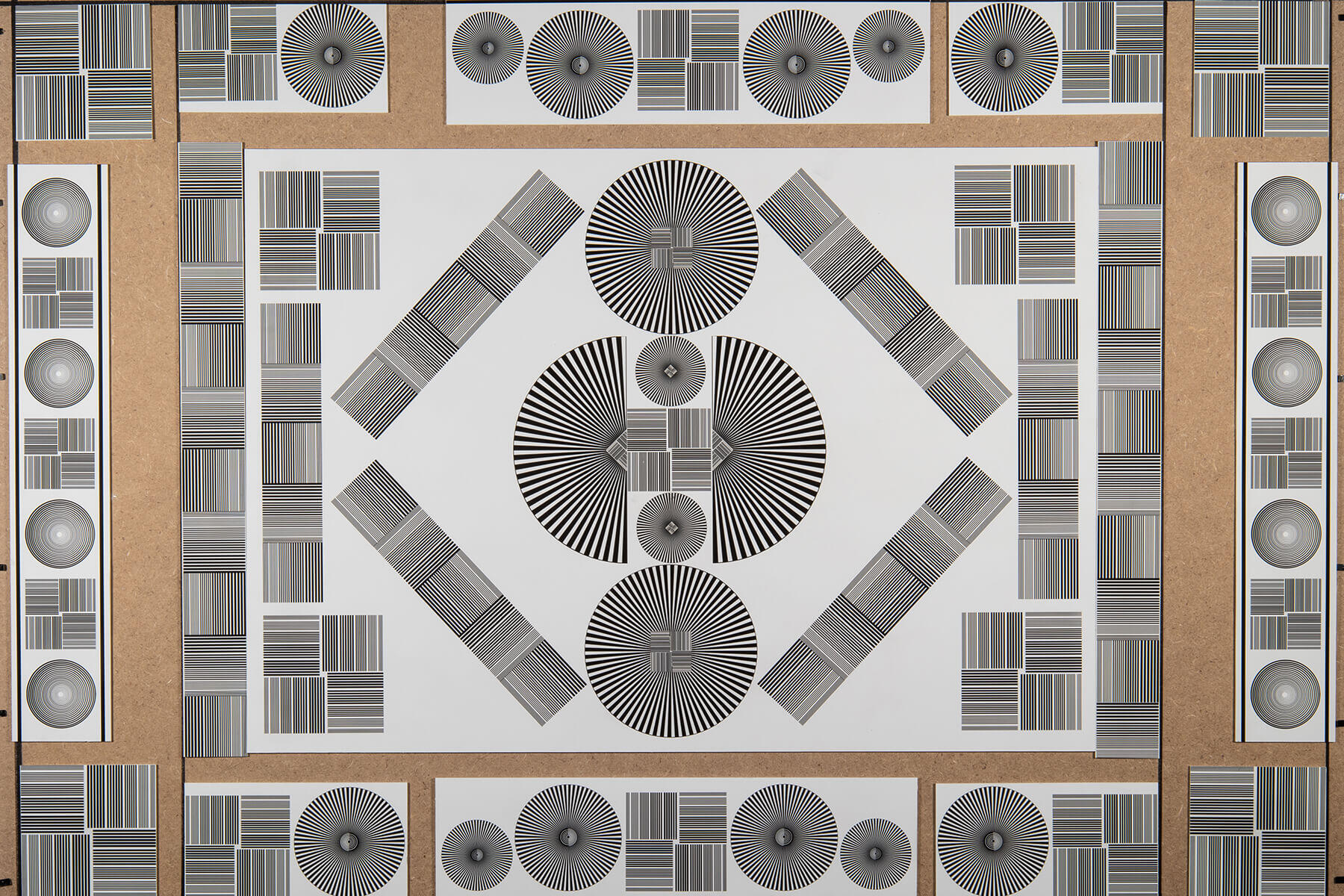
Canon EOS R6 test: Highly recommended
Posted on Nov 27, 2020
It’s fair to say that Canon didn’t dive headlong into the mirrorless camera market, and while its EOS M system was alright, you couldn’t say the cameras and lenses were going to set anyone’s pulse racing. But Canon, as you’d expect with the mirrorless camera market expanding quickly, has shaken off its lethargy and its EOS R system is developing into something quite special. Its latest cameras , the EOS R5 and the EOS R6, have the features to appeal to photographers of all levels, including the legions of Canon DSLR owners out there waiting for an excuse to go mirrorless.
Canon announced both models at the same time, and while they share some key features – including autofocus and an integral image stabiliser in a similar, but not identical, body design – the EOS R5 and the EOS R6 are aimed at different end users. The EOS R5, which we tested last issue, has 45 megapixels under its bonnet, and for movie makers there’s 8K video. It comes with a serious price tag, too, at £4199 body only. By contrast, the EOS R6 is much cheaper, but it still costs a very significant £2499 for the body only, so it’s not exactly an impulse purchase.
At the EOS R6’s heart is a 20.1-megapixel CMOS full-frame sensor that works with the DIGIC X processor and a native ISO range that tops out at 102,400. Among the camera’s many more highlights is an in-body image stabiliser that claims to give up to 8EV of benefit (with the 24-105mm f/4 L IS USM at 105mm), autofocusing with a Dual Pixel CMOS AF II system and continuous shooting at 20fps with the electronic shutter or 12fps with the mechanical shutter. For video shooters, there’s 4K at 59.94/50p at 230Mbps, 4K time-lapse and HDMI output and, finally, before we get onto the camera’s handling, the EOS R6 has dual card slots, both SD UHS-II compatible, so no CFexpress here.
Pick up the EOS R6 and you can’t but help be impressed with its feel and overall size. It feels respectably robust and, although weather sealed, it’s less extensive compared with the EOS R5 and there’s no top-plate LCD.
Performance: ISO
The Canon EOS R6’s native ISO range runs from ISO 100 to 102,400 with expansion at the top end to ISO 204,800, and that is 1EV better than that available with the EOS R5. With its lower resolution and larger pixels covering the same area, you would expect the EOS R6 to outperform its more expensive sibling in the digital noise department.
This set of pictures was shot with a tripod-mounted EOS R6 and the 24-105mm f/4-7.1 IS STM. The exposure for the ISO 100 frame was 2secs at f/8 with in-camera noise reduction turned off and the Raws were processed in Lightroom with no noise reduction applied.
Noise performance is very good. Results are very clean at speeds up to ISO 1600 with barely any noise, and fine detail remained unsullied. The situation was still very good at ISO 3200 and while you can see a faint grain pattern in smooth areas of mid-tone, there’s no problem getting big prints out at this setting even without any work in editing.
Continue up the ISO scale and the EOS R6 continues to impress with critically good shots possible at ISO 5000 and 6400. At ISO 6400 you can see fine grain in the sky, but this is at 200% on screen. Moving on higher ISO speeds, performance continues to impress and while noise is more evident at ISO 12,800 and at ISO 25,600, if you need such high sensitivity, you get remarkably good results and detail, and saturation remains unaffected. Of course, all good things come to an end, and by the time you venture beyond ISO 25,600, image quality falls away.
If you need a camera for its high ISO performance, the EOS R6 could be it. You get very decent results at speeds where most cameras have long given up the ghost.
Click the images to see a larger view
The design and control layout of the EOS R6 is very Canon. By this I mean that most Canon owners will be able to pick up the EOS R6 and know instinctively where key controls sit, how they work and can whizz around the menu structure with alacrity. There are no design surprises, such as the touch-sensitive multifunction (M.Fn) bar, which was seen on the EOS R, but has not surfaced on any Canon camera since.
So the EOS R6 has a large rear-mounted control dial, which Canon calls the Quick Control 1, and there are two more dials on the top-plate – one for the right thumb, the Quick Control 2 dial, and the other for the right forefinger, the Main dial. Get used to how these controls work and have them set to suit the way you work and it makes taking pictures a slick, instinctive process. Should you need to make adjustments, you should be able to make them without having to look down to see what you’re doing.
As you’d expect, there is flexibility in set-up, so you are not limited to default settings. For example, the rear control dial controls aperture as default in manual mode and exposure compensation in aperture-priority mode, but has nine other custom options, including ISO and white-balance. The top-plate Quick Control 2 also has ten options, while the Main dial is limited to just three: aperture, shutter speed and off.
There’s great potential for customisation through the physical controls, and there is even more through the menu system. Speedy access to commonly used functions is provided via the Q menu, either by touch, by using the rear dial, which scrolls through the 11 items, and the Main dial, which actually selects the setting within the feature.
The EOS R6’s touchscreen is sensitive and works well with two sensitivity settings, plus options of touch shutter, and touch and drag AF working across the whole or just part of the screen. Something that would be good is if Canon consolidated its touch menus, because currently there’s touch and drag AF in one menu, touch shutter in another and touch control is in yet another. Touch shutter can be turned off/on using the touchscreen.
Touch control has the usual frustrations for me. It’s great for menu set-up and image previewing, with swipe for moving from one image to the next or for navigating around the image, and pinch for zooming in. Touch shooting and AF is handy when you want to sneak a few candids and it’s great in video, too, for pulling focus or to select part of the scene instead of what the camera picked out. But then it gets niggly when you find the AF point at the bottom left of the monitor instead of the centre, because you happened to brush the touchscreen, or when you take a few shots of your feet with the touch shutter. For me, it would be great if I could have touch control on for menu setting and playback, but off for everything else.
Performance: exposure latitude
An exposure bracket of Peterborough Cathedral was taken to help assess exposure latitude of the Raws. The correctly metered exposure was 1/250sec at f/9, ISO 100 and the bracket was shot manually by adjusting shutter speeds. Exposure correction was done in Lightroom.
The EOS R6’s overexposed Raws were less flexible than the underexposed Raws when it came to exposure correction. The +1EV and +2EV shots recovered fully, giving results identical to the correctly exposed shot, but anything more and contrast remained high, highlights were burnt out and there was a colour shift.
Much more success was enjoyed from the underexposed Raws and even the -4EV was fully recoverable, with barely any gain in digital noise in the shadows. So if you want to control highlights by underexposing them and then recovering the shadows in processing, the Raws from the EOS R6 respond well to that sort of treatment.
I liked the multifunction lock that lets you turn off six controls at the push of a button – the three control dials, the focus joystick, touch control and lens control ring. I had mine set to lock touch control only, so I could deactivate the touch function without having to dig into the menu system.
There is even more set-up versatility and that’s provided by the Canon RF lenses and their Lens Control Ring. The default is exposure compensation with half pressure on the shutter button. In total there are 18 choices, including exposure compensation and ISO that can be brought into play with or without partial depression of the shutter button, depending on your preference. Some lenses – not the one tested here – have an AF stop button and this can be reconfigured from the camera, too.
One button that is less frequently seen is the rate button, which lets you quickly star rate your shots, and ratings are carried through to your editing software. Obviously, how useful this is depends on how you like to work and how much credence you give to preview images and, of course, going through a big shoot consumes battery and takes time. Ratings range from one to five stars, and I had three and five active to match my Lightroom workflow.
So, there’s much to like in the handling and design aspects of the EOS R6 and that carries through to its performance and image output. The camera might not have a high pixel count, but what it does have works very well, giving an awesome high ISO performance and images that are full of detail.
The autofocus, white-balance and autoexposure systems perform admirably, giving consistent results in a wide variety of lighting situations and the burst shooting rate is quick enough, with plenty of capacity for even the keenest action shooter. With a Lexar 2000x SD card, I got just under 13fps in continuous high setting with the mechanical shutter, and 99 full-size Raw frames at that rate before the camera slowed at all. In CRaw format, the exposure count was 250 shots with no signs of stopping.
Canon’s Dual Pixel CMOS AF system has been tried and tested on previous models, so it was no surprise to see how effective it was here. It’s smooth, accurate and very responsive, great for stills and video, where using the touchscreen to pull focus within the scene was effective and slick, better than I could manage manually. There’s a choice of eight AF modes and you can set a function button to go into that AF menu and pick the ones you want to choose from. Other options include case studies for continuous focus and there’s the menu for people or animal subjects.
Canon RF 24-105mm f/4-7.1 IS STM
Canon already offers three standard zoom options in its R system, the top-end 24-70mm f/2.8L IS USM (£2329), the mid-range, constant aperture 24-105mm f/4 L IS USM (£1119) and this nicely priced RF 24-105mm f/4-7.1 IS STM (£469). Its attractive price comes at a cost, however, and while the lens is compact and lightweight, a maximum aperture of f/7.1 at the 105mm is limiting. It’s just as well that the EOS R6 has such a good ISO performance, because you’ll need it when light levels drop.
The lens zooms from 24mm to 105 in one quarter turn of the zoom barrel. There are just two controls: a stabiliser, on/off and the option of having what is usually the focus barrel working as a control ring. What the control ring adjusts can be set in the camera menu. There are 18 options, but some of those options double up: there are two ISO and two exposure compensation settings, the difference between the two being that the shutter button has to be partially depressed for the function dial to work.
Optically, this lens is a decent performer. At 24mm and f/4, sharpness is good at the centre, but less good at the edges. Overall, image quality at f/8 and f/11 was very good before diffraction softened shots at smaller aperture values. One thing worth pointing out at the 24mm end is its very obvious and significant barrel distortion that needs to be corrected in-camera or using software.
The mid-range of this lens, around 50mm, performed well, especially at f/8 and f/11, with images of high sharpness and contrast before the images softened with diffraction at f/16 and f/22. It was a similar showing at the wider apertures at ISO 105mm, with f/8 and f/11 respectably capable, but the smaller values were less good, and generally this setting was the least impressive of the tested focal lengths.
The attraction of the RF 24-105mm f/4-.7.1 IS STM is its price (it’s under half the cost of the constant f/4 version) and its portability. It is a decent performer, too, if you keep to the wider and mid-value apertures.
Click the images to see a larger view
For stills shooting, I mostly kept with single or zone focusing using the focus lever, or touch and drag AF on the monitor, to pick out what I wanted sharp, and both methods worked well. My favourite setting for general stills shooting was the Expand AF area setting, which is an enlarged single zone, but no matter the mode in use, the Canon’s AF in low light and low contrast proved impressive, and there was little searching or hesitancy.
For video, the face AF + tracking setting option worked well and it followed the subject as it wandered around the frame quite tenaciously.
When it comes to video, the EOS R6 is richly featured, with 4K up to 60p and Dual Pixel AF available. In standard 4K shooting there is a slight crop and this becomes more significant with the electronic image stabiliser – it’s 1.52x with the Digital IS Enhanced setting. There is a potential heat issue when shooting 4K, but only if you’re shooting 30 minutes and more, so I didn’t manage overheat the camera during my brief time with it – unlike the EOS R5, which I overheated several times, but that was shooting 8K.
To sum up, I thought the Canon EOS R6 performed impressively in a wide variety of situations producing quality stills and video. It proved good company, handling well and had lots of set-up options to configure it to suit me. Despite its slow aperture at the longer end, the 24-105mm f/4-7.1 made a nice standard zoom to have on the EOS R6, too.
Verdict
The Canon EOS R6 is an excellent camera and very capable of delivering awesome stills and video footage. It’s great to use thanks to Canon’s reliance on control dials and good-size buttons, plus there’s the usability of the touchscreen and the flexibility provided by customisable controls. Most importantly, I was pleased and impressed at what the camera produced, notably stills shot at high ISO speeds, and even though the 20 megapixels is fewer compared with many of its rivals, the images were packed with detail, contrasty and the Raws easy to work with. At £2499 body only, that is still a lot of money for a full-frame camera of this resolution, but there’s no denying that the Canon EOS R6 is an extremely capable and excellent-value camera.
Features: 23/25 The Canon EOS R6 is equipped to appeal to stills and video shooters
Handling: 24/25 Impressive and enjoyable to use with responsive AF and fast burst shooting
Performance: 24/25 Nothing but good things to say about the camera’s delivery of fine images, ably assisted by its IBIS system and low levels of noise
Value for money: 23/25 There is much to enjoy in the EOS R6, so although its megapixel count is modest, it’s still delivers high-quality images so rates good value
Overall: 94/100 An impressive and very capable full-frame camera that’s also lovely to use, so the Canon EOS R6 is highly recommended
Pros Good to use, very impressive high ISO performance, IBIS system, consistent exposures, AF responsive
Cons Nothing significant but perhaps a slightly higher megapixel count would be nice
There’s never been a better time to make good use
Where will your kit go next? Inspire others, make some extra cash and make a difference. Sell your used kit and let someone else love it as much as you have. Make good use of your used gear. Sell yours today at mpb.com/sell
As featured in issue 83 of Photography News






































